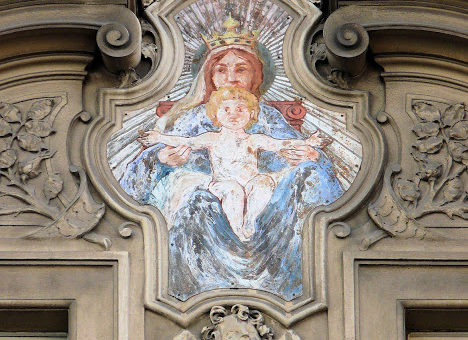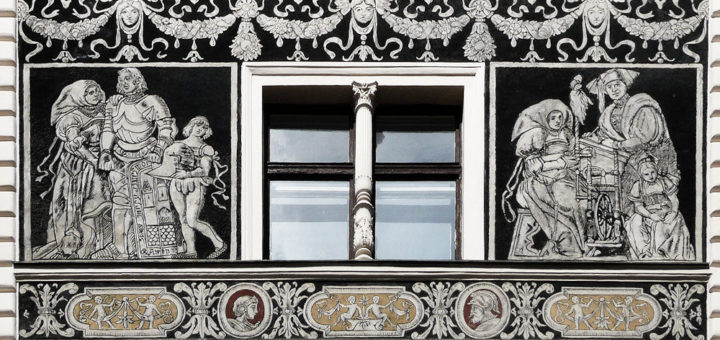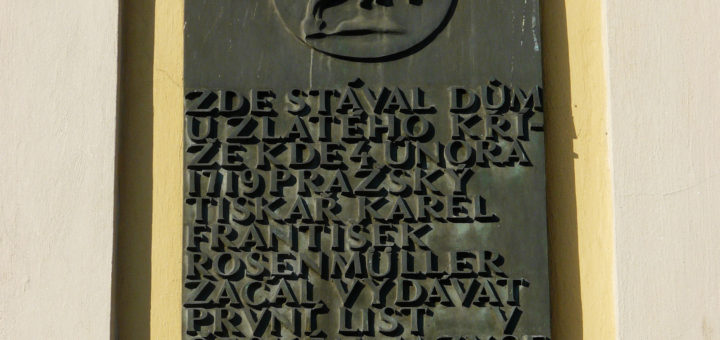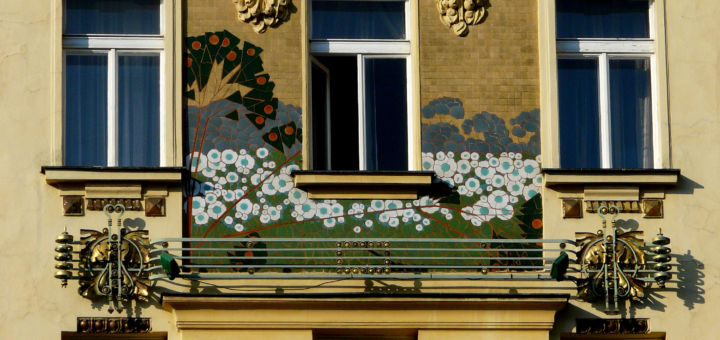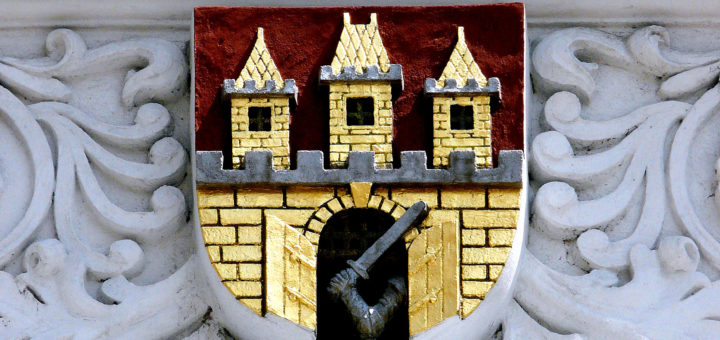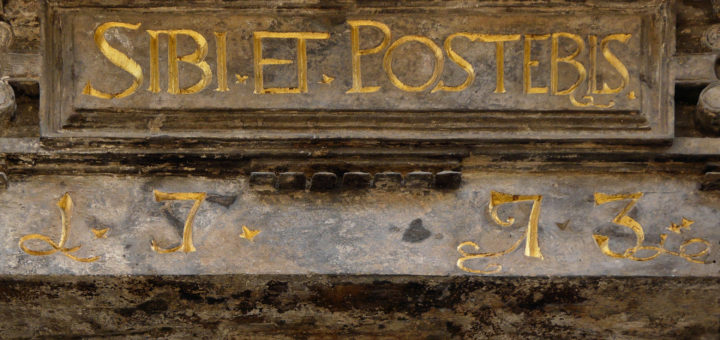Tagged: Prague 1
Betlémské náměstí 258/10
Betlémské náměstí (Bethlehem Square) is most famous for its chapel which from 1402 onwards became the de facto base for Jan Hus and his reformist congregations. Opposite the chapel stands this fine baroque house: the...
Jilská 527/2 and Skořepka 527/1
This magnificent sgraffito on the theme of War and Peace is by the artist Mikoláš Aleš, whose distinctive murals of Czech legend and history turned the city into a living textbook at the end of...
Uhelný trh 526/6
The memorial plaque on this building in Uhelný trh (Coalmarket) is of particular interest to historians of Czech culture and language. ‘Here stood the house of the Golden Cross, where, on 4 February 1719, the...
Václavské náměstí 825/27: Meran Hotel
The Meran Hotel, Wenceslas Square (formerly the Hotel Garni) was designed by Alois Dryák and Jan Letzel, and constructed between 1895 and 1906. Directly abutting on this building is another fine example of contemporary art...
Václavské náměstí 826/25: Grand Hotel Evropa
There has been a hotel in this prime location on the northeast side of Wenceslas Square since 1872, when the Hotel Archduke Stephen (U arcivévody Štěpána) was constructed according to a plan by Josef Schulz...
Václavské náměstí 832/19
Currently the home of the H&M fashion store in Wenceslas Square, this grand neo-baroque building by Friedrich Ohmann and Osvald Polívka was at one time the headquarters of the Trieste-based insurers Assicurazioni Generali. Between 1...
Staroměstské náměstí 605/13: House of the Stone Bell
One of the earliest surviving domestic residences in the city is the exquisite Dům u kamenného zvonu (House of the Stone Bell) in the Old Town Square. The building’s name derives from the bell carved...
Staroměstské náměstí 608/10
‘Gules, a tower, triple-towered or, in the open gateway an arm in armour embowed fesseways holding in the hand a sword in bend sinister, all proper.’ The arms of the City of Prague appear on...
Celetná 562/20
Above a baroque lintel in the Old Town of Prague appears this inscription, dated 1773: ‘To him and those who come after him’ (‘postebis’ corrected to ‘posteris’). The building is now part of the Philosophical...
